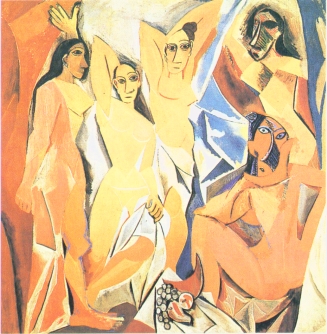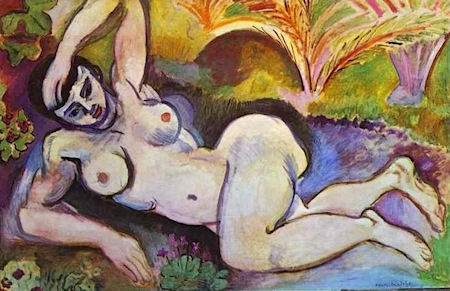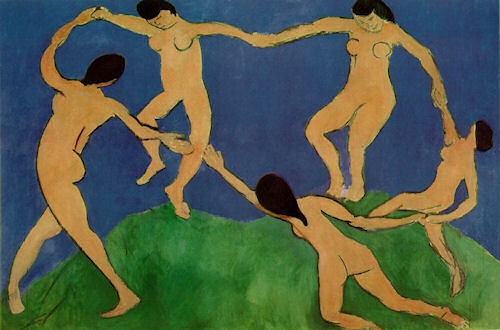The cultural dominance of art based on realism was a late development
largely confined to Western culture. With it went a powerful link between
Christianity and the academies, which insisted on a selective approach to
nature in order to record God-given appearances and communicate
Christian virtues and meanings. Moreover, painters should not merely
copy every detail but select only what was most beautiful and significant
according to universal academic standards. Inevitably these standards
slipped towards the depiction of ideal forms of the classical world that
paradoxically were considered timeless. Nevertheless, painting’s first aim
was to represent facts about the visible world and the way this is seen by
the eye. Retinal realism came to the forefront with explorations of the
rules of perspective. Every important facet of the subject was to be traced
through space, into the lens of an eye, and from there plotted in two
dimensions as an image with the illusion of depth. Later, painting as a
method of representing the seen world began to be combined with the
personal expression of the painter’s feelings and his creative power to
present action and emotion. The aim was still to capture a visual
phenomenon. However, expressionism began to dominate the creative
process and the painter’s private feelings eventually came to carry the
main burden of the pictorial message. Finally, it was the mind that lay
behind the eye that came to dominate the process of turning perception
into representation.
Painting inhabits a mental world where the cerebral cortex projects its
virtual images of imagination and feeling. It would be useful to pin down the
point at which the trickle of efforts towards cortical abstraction became a
torrent, and 1907 is a good a year as any. This was the year Picasso tried
his first experiment in deconstructing the human figure to intensify
expression. Les Demoiselles d’Avignon for the first time formulates the
Cubist idea of reproducing volumes fundamentally as rhythms of surfaces
(Fig 6). The images remained attached to the objects but became freed
from their original meaning. It was also about the year 1907 that Kandinsky
began to assemble examples for his theoretical essay ‘About the
Spiritual in Art’ which was to promote a new form of perception and
representation in which painting was to be freed from reality and have its
beginnings in virtual pictures of the mind.
Fig 6 Picasso: Les Demoiselles d’Avignon (1907)

A dramatic return to fundamentals through the nude was inaugurated with
two pictures painted in the year 1907. By virtue of the great impact of these
paintings, 1907 can conveniently be taken as the starting-point of 20th-
century art. The works are Matisse's Le Nit bleu and Picasso's
Demoiselles d'Avignon; and both these cardinal, anti-academic pictures
represent the female nude. This revolt of 20th-century painters was not
against academism: that had been achieved by the Impressionists. It was a
reaction against the doctrine, with which the Impressionists implicitly
agreed, that the painter should be no more than a sensitive and well-
informed camera. And the very elements of symbolism and abstraction -
which made the nude an unsuitable subject for the Impressionists,
commended it to their successors. When art was once more concerned
with concepts rather than sensations, the nude, which by that time had a
long history of academic development and a profound influence on what
was acceptable as art, was the first concept which came to mind.
Matisse: La nit Bleu (1907)

Matisse and Picasso are almost antithetical characters, and their reactions
to the nude have been very different from one another. Matisse was a
traditionalist picture-maker whose life drawings could almost be mistaken
for those of Degas, and like Degas or Ingres he deduced from the naked
female nude certain pictorial constructions which satisfied his sense of
form and which were to obsess him for a great part of his life. The Blue
Nude represents such a construction. It was an important part of himself,
and he not only carried out the same pose in sculpture, but also brought it
into numerous other compositions. This is the first investigation of the use
of the nude as an end in itself or as a means of creating significant form.
The revolutionary character of Matisse's picture resides not in the end but
the means. That enjoyment of continuous surfaces, easy transitions and
delicate modelling, which had seemed such an essential factor in painting
the nude, is sacrificed to violent transitions and emphatic simplifications.

This problem of simplifying a female body was to obsess Matisse and all
the most intelligent painters of his time. The classical system had been the
hard-won solution of the problem, and when it was no longer acceptable
some other form of simplification had to be found. Matisse sought for it in
an earlier phase of the Greek tradition, and produced La Danse and La
Musique, the two decorations painted for the art collector
Shchukin. He
sought for it in Japanese prints and in the Islamic Exhibition of 1910.
Sometimes his search is successful but sometimes he seems to grow
exhausted in pursuit of a quarry. Such is the impression we receive from a
series of eighteen photographs taken of the stages in the completion of a
painting known as the Pink Nude. Almost thirty years have passed since
he began work on the Blue Nude, but the first stage of his new quest is
remarkably similar in pose. He is still clasping the same obsession. But the
handling is less vigorous, as if the simplifications had to be achieved by
argument and not by instinct. 
